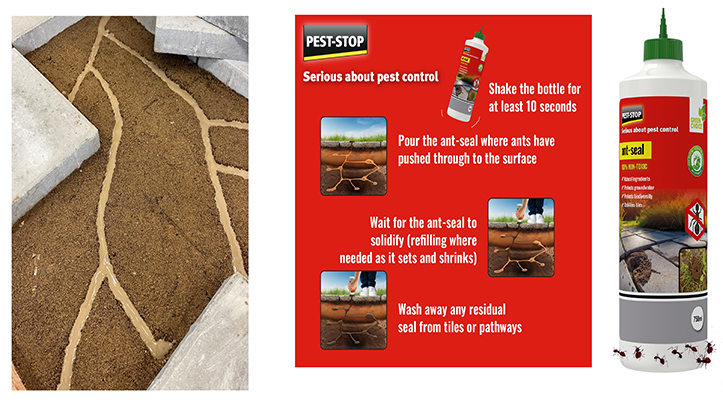If you’ve ever noticed loose patio tiles, uneven paving or unexplained cracks in your garden path or patio, ants could be the culprits.
While tiny, ant colonies under hard surfaces can cause surprisingly big structural issues – tunnelling through sand or soil, loosening materials and even causing minor subsidence.
Why tackle nests early?
Tunnelling ants displace material, widening cracks and loosening tiles. Over time, this can create uneven surfaces, creating trip hazards.
Sophie Thorogood, pest prevention expert at Pest Stop, said: “Ants are an important part of a garden’s ecosystem, but when they nest under patios or paths, they can cause structural problems.
“Though there are preventative measures including keeping lawns mown and bushes and hedges trimmed, to tackle tunnelling ants, decisive action is often required.”
To help homeowners manage this issue without resorting to harsh chemicals, Pest Stop has launched Ant-Seal, a non-toxic, ‘liquid soil’ solution. It provides homeowners an environmentally friendly solution which targets nests beneath hard surfaces.
“Ant-Seal offers a simple, non-invasive way to deal with this, without harming the ants or the wider environment,” explained Ms Thorogood.
The substance penetrates deep into ant tunnels, solidifies and safely displaces the colony, helping to stabilise the surface above and prevent further damage.
A natural solution for outdoor spaces
Made using Soilic technology, Ant-Seal is a natural clay and water-based solution that flows into nests and solidifies, which in turn stabilises the surface above. It’s free from pesticides, safe for pets, wildlife and children and gentle on the environment.
Ms Thorogood added: “Unlike conventional treatments, Ant-Seal doesn’t kill the ants, it simply removes their habitat, encouraging them to relocate.
“It also helps support soil health by adding potassium, magnesium and iron – nutrients known to improve sandy soils and encourage health plant growth.”
Easy to apply
Ant-Seal is suitable for any paved area where ants are causing visible disruption. No specialist tools are needed, and it can be used as part of routine garden maintenance.


